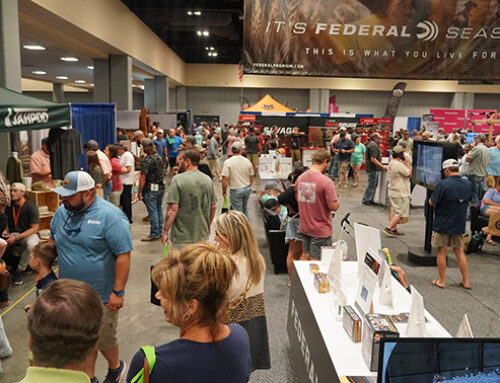North Dakota Survey: Water Index Drops 80 Percent, Ducks Down 27 Percent

Conducted annually since 1948, the North Dakota Game and Fish Department’s spring survey of wetlands and ducks in this vital state indicates very dry conditions, with a water index (wetland count) down 80.3 percent from 2020, and nearly 66.7 percent below the long-term average. Given the drought that is gripping North Dakota — along with much of the prairie pothole region — it’s not surprising that the state’s breeding duck estimate is down nearly 26.9 percent from last year.
“This is the bad news we knew was coming,” said Dr. Frank Rohwer, president and chief scientist of Delta Waterfowl. “The reduction in water is staggering. It’s the highest year-over-year percentage decrease in the history of the North Dakota survey.”
According to Mike Szymanski, North Dakota’s migratory game bird management supervisor, 2020 was the sixth wettest year on record, while 2021 is the fifth driest in the past 74 years.
“That’s an indication of how dynamic this system is that we work in,” he said. “We essentially have no temporary and seasonal basins holding water on the landscape right now. And that has huge ramifications for duck production in the state.”
The more promising news is that breeding duck estimates remain high thanks to carryover from a lengthy wet cycle that’s boosted duck production for more than a decade. Despite declines among key species, this year’s breeding duck index of 2.9 million remains 19 percent above the long-term average and is the 48th highest recorded.
“That’s still a lot of ducks,” Rohwer said. “The problem is I think this will be a ‘one and done’ year for nesting hens, meaning even prolific renesters like mallards won’t attempt to nest again if their first nest fails. And we know that even in a good year, most nests are lost to predators. There’s also a strong probability that duckling survival will be very low. It’s challenging to make ducks without water.”
North Dakota’s survey indicates decreases for most major species from 2020, including mallards, which decreased a whopping 48.7 percent to 448,116 birds — the 28th highest estimate on record, but the lowest since 1993. Pintails fell to 81,716, a 65.9 percent decline and 67.7 percent below the long-term average. American wigeon declined 49.1 percent to 32,998, 15.4 percent below the long-term average.
Blue-winged teal were a surprise, as their numbers fell by only 9.5 percent. Teal prefer seasonal and temporary wetlands just like pintails, but bluewings stayed in the state, while pintails appear to have assessed conditions and moved elsewhere. Bluewings comprise just over 1 million of the ducks counted, which is still a healthy 42.4 percent above the long-term average. And although greenwings declined 49.6 percent to 34,710, they remain 70.3 percent above the long-term average.
Key diver species are in decent shape. Redheads declined 8.3 percent to 186,313, but remain a healthy 56.5 percent above the long-term average. Lesser scaup (bluebills) fell to 151,603, a 44.9 percent decrease that places them just above the long-term average. Canvasbacks, which nest more heavily in the Canadian parklands, declined 47.5 percent to 32,686, 19.6 percent below average.
Interestingly, the seemingly unflappable gadwall population continues to boom, increasing 47.4 percent to 649,216 ducks — an incredible 109.5 percent above the long-term average.
“We have seen these oddities in the gadwall index when coming abruptly from wet conditions to rather dry conditions,” Szymanski said. “Being a late-nesting species, gadwalls that won’t breed this year are still in the process of aggregating for departure to more secure molting habitats.”
What does North Dakota’s survey mean for hunters? That’s challenging to predict, particularly given the cancellation of the U.S. Fish and Wildlife Service’s Waterfowl Breeding Population and Habitat Survey. However, it’s clear that conditions in North Dakota and the broader prairie pothole region this spring are not good for strong duck production.
“Duck populations remain strong, but I don’t expect a ton of juveniles in the fall flight,” Rohwer said. “Experienced, adult birds are far tougher to decoy, which will challenge hunters — especially in Louisiana, Texas and other regions of the southern United States. Years with low duck production disproportionately affect hunter harvest in the South.”
Look for further analysis from Delta Waterfowl later this summer, including the annual “Fall Flight Forecast” in the Fall 2021 Issue of Delta Waterfowl magazine and a Fall Flight Forecast podcast. — Kyle Wintersteen






First of all I can’t believe the lame Covid excuse for not surveying but that’s our government these days. I’ve hunted long enough to remember low duck numbers and restricted seasons. I’ve always been suspicious of the current tendency to just keep shooting limits high all the time regardless of conditions on the breeding grounds. I’ve seen steady decline in the number of ducks coming to my area for the last decade but we keep allowing the same limits. Whats happening to all those ducks? Where are they? The popular theory here in the Mississippi flyway is that the migration has moved west to the central flyway. What if we’ve just overshot the ducks in the MS flyway and the reason there are more in the central flyway is due to lower hunting pressure on that population? Big commercial hunting clubs add to the problem by holding ducks with lots of food so they don’t disperse. I wonder how many of the thousands of ducks killed by commercial operations wind up eaten and how many get buried? Just food for thought. I’d like to see good solid research on where ducks are going because they are not coming down they MS flyway anywhere near like they used to. I can’t find any data on current migration patterns. We need to restrict harvest this year given what we know about conditions on the breeding grounds.